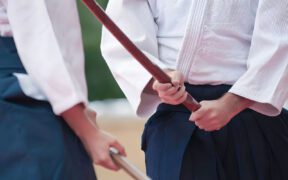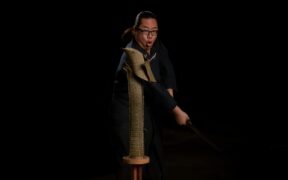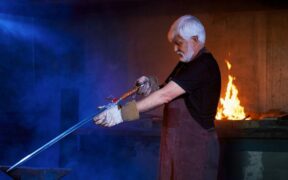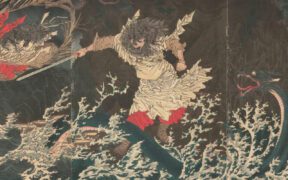Our content features commercial links to our products, committed to transparent, unbiased, and informed editorial recommendations. Learn More
Miyamoto Musashi: The Life, Art, and Swords of the Lone Samurai
NO AI USED This Article has been written and edited by our team with no help of the AI
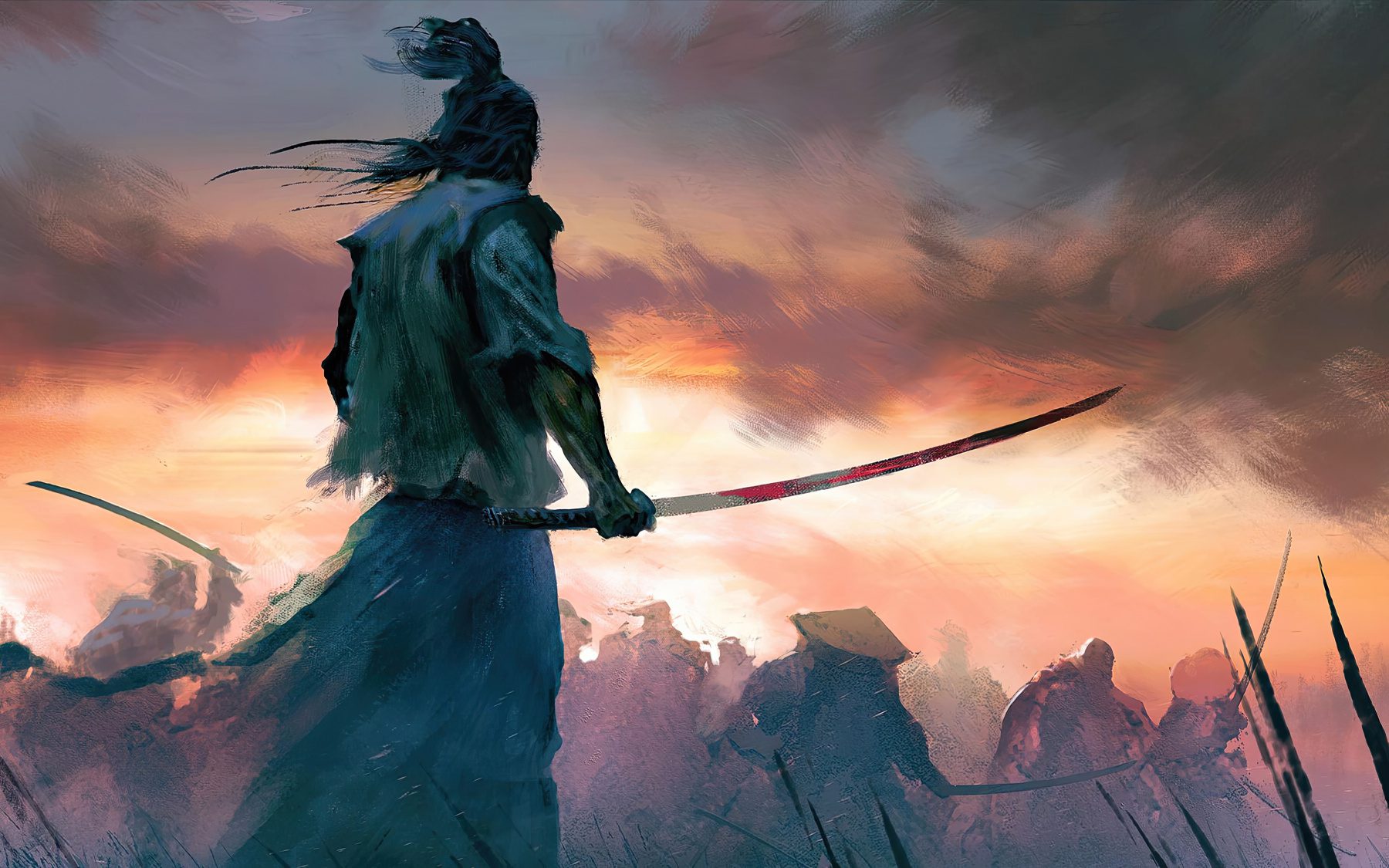
Many stories are told about legendary swordsmen and warriors who flourished throughout history. Among these swordsmen, the Japanese Lone Samurai, known as Miyamoto Musashi, is by far the most well-known and fascinating to fans of the blade, both young and old, worldwide.
Musashi Miyamoto is a Japanese Samurai or ronin, a historical and traditional cultural figure with a high status in popular media and folklore. In this article, we will delve into his historical life and works. We will thoroughly explain his achievements and what he is most known for. Then you will see the swords of choice he utilized throughout his lifetime as we unravel some unknown facts about him.
Who is Miyamoto Musashi?
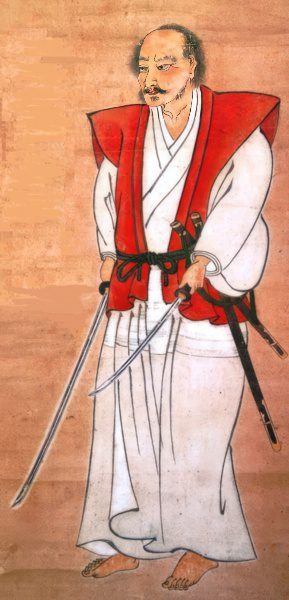
Miyamoto Musashi (宮本 武蔵) is a renowned Japanese philosopher, strategist, writer, and swordsman or ronin Samurai recognized today as a Kensei sword martial arts master. He was born in 1584 in the Harima or Mimasaka Province and died in 1645 at age 64 from lung cancer. Although he is seen as a strong historical figure, most things believed about him are disputed as there is no hard evidence.
Miyamoto Musashi can be known by other names, such as Miyamoto Bennosuke, Shinmen Takezo, or Niten Doraku, inspired by Buddhism. He was born in the Sengoku era of Japan, a period of many battles and Japan’s national unification. He passed in the Tokugawa Edo Era in the Shogunate, where most of the Samurai tradition and culture is nurtured.
Musashi started his sword training in the Okayama prefecture with his father and teacher, Munisai, who was an unmatched Samurai. At only 13 years old, Musashi won his first duel against another powerful Japanese swordsman named Arima Kihei. He was introduced to Buddha and the Buddhist teachings by his uncle and won several duels at a young age.
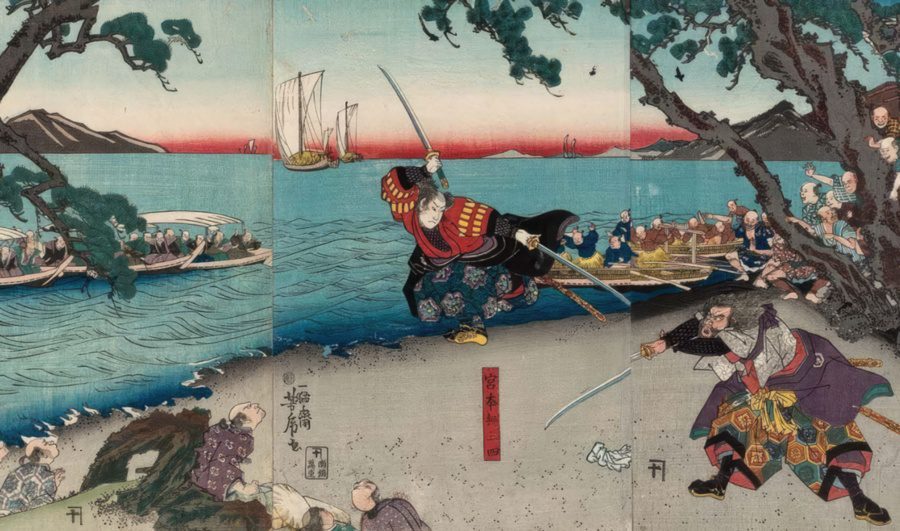
At age 21, he began traveling across Japan to experience the Samurai spirit and fight with the strongest of warriors. He became known as a ronin, meaning masterless Samurai, and Ronins could sometimes be drifters or unemployed vagabonds, a term used in Japanese manga to describe Musashi.
By age 29, he was believed to have fought and won over 60 life-or-death duels against other well-trained and highly experienced Samurai warriors.
After age 30, he was highly sought after and welcomed as a military strategist and swordmaster by multiple Japanese clans. Being welcomed as a ronin to serve a Japanese daimyo, or lord, such as the Kumamoto and Hosokawa, as a guest only confirms that Musashi was a legendary swordsman in his lifetime.
Aside from excelling in duels, Miyamoto was a military strategist who took part in three major Japanese wars marked as turning points in Japanese history – the Battle of Sekigahara, the Battle of Osaka, and the Shimabara Rebellion.
He was involved in many legendary duels and fights, equating to a life-or-death situation every two months throughout his lifetime. He has won 60 duels and possibly lost only one against Samurai Muso Gonnosuke. However, this is heavily disputed by many. Some duels that stand out were against swordsman Shishido, Seijuro, and especially Sasaki Kojiro, as well as the duels in Yoshioka and Kyoto.
Musashi was also a devoted artist who created zen brush paintings, wood sculptures, and calligraphy. His most recognized work is the Dokkodo (The Path of Loneliness) and The Book of Five Rings, which was highly valued by sword enthusiasts.
Miyamoto is also said to have never bathed in his life, a fact that most folks, even those with great respect for him, are unaware of.
The Book of Five Rings
Miyamoto is remembered as a Kensei sword saint, a valued and highly respected sword master in Japan. But he is also remembered as an artist and writer. The Book of Five Rings, also known as Go Rin No Sho, is a work he developed depicting his skill and experience in swordsmanship. The book was published a week before he died in 1645 and was given to Terao Magonojo, his most prized student.
His greatness is attributed to his success as a lifelong Samurai experience and his expertise presented to future generations through his writing. It is said that no other book about swordsmanship is as elaborate as The Book of Five Rings, in which Musashi refers to himself as Shinmen Musashi No Kami Fujiwara No Genshin in the book’s introduction.
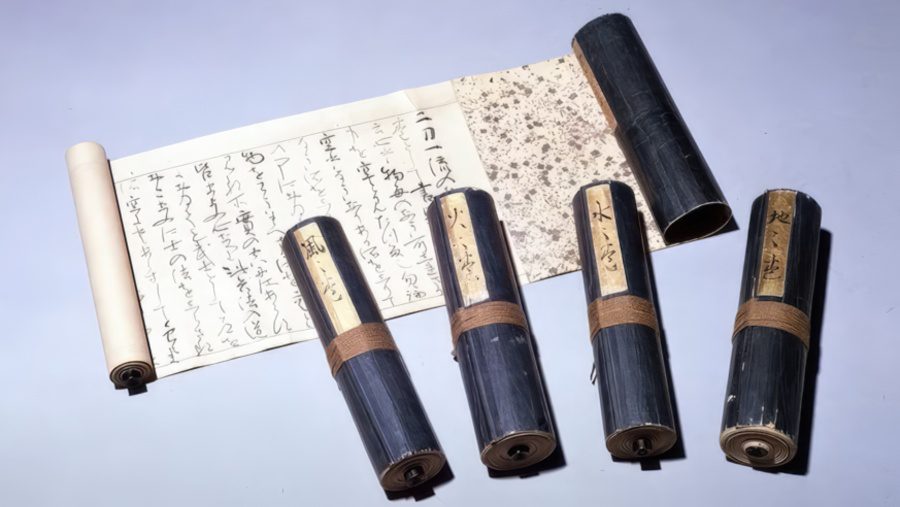
We will briefly present you with the five books, some popular quotes from each, and what they stand for. It is important to know that not all of Musashi’s teachings were strictly about swords, as they can also be interpreted as life lessons.
The Book of Earth – The general framework for the way of the Samurai
- Know how to fight by training in the art of swordsmanship, and think of it in terms of warfare.
- Practice everything as it may be useful in any situation.
- A warrior always carries two swords and should practice with them if he has to fight a battle.
The Book of Water – The core theory of Swordsmanship
- Train daily so you can move quickly and easily at any time.
- You should refrain from practicing the stances of the Katana in a set way but rather sharpen your senses and use the stance easiest to cut down the enemy each time.
The Book of Fire – The theory of how to fight duels and wars
- Know your enemy, don’t let him show his strong points, and attack his weak points.
- When the enemy is going to strike, prevent him from doing so by showing that you are ready to strike back.
- If it doesn’t work twice, change your attack strategy.
The Book of Wind – The criticism of other Ryuha styles and confirmation of the correct path
- Teach in a way that is easy to understand and master without being bound by a set teaching method.
- Consider the student’s ability to understand, teach him the right way, and make him abandon his habits and assumptions.
The Book of Emptiness (Void) – The way to practice the path and the ultimate way to be
- If you continue to train your body and mind in the pursuit of better techniques, you will eventually reach a place where there is no cloudiness, and your doubts will be cleared. This is the true “emptiness.”
Miyamoto Musashi’s Swords
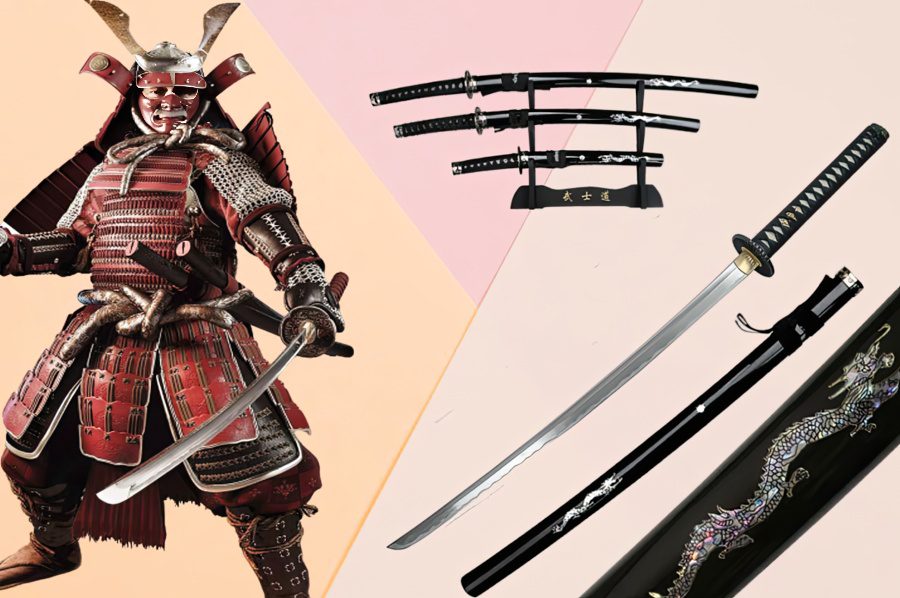
Miyamoto Musashi lived in Japan in the late 16th and early 17th century during the early Edo period. This time in Japan is remembered for its stability, economic growth, and political peace thanks to the military dictatorship known in Japan as the Shogunate.
Musashi’s arsenal of weapons was Japanese Swords made out of the traditional Tamahagane steel. He did not invent the Katana or any Japanese Sword, a common misconception. In Myamoto’s lifetime, the Japanese Samurai sword became more of a traditional art piece than a warfare piece and was soon associated with Samurai, becoming a traditional symbol of Japan.
Katana
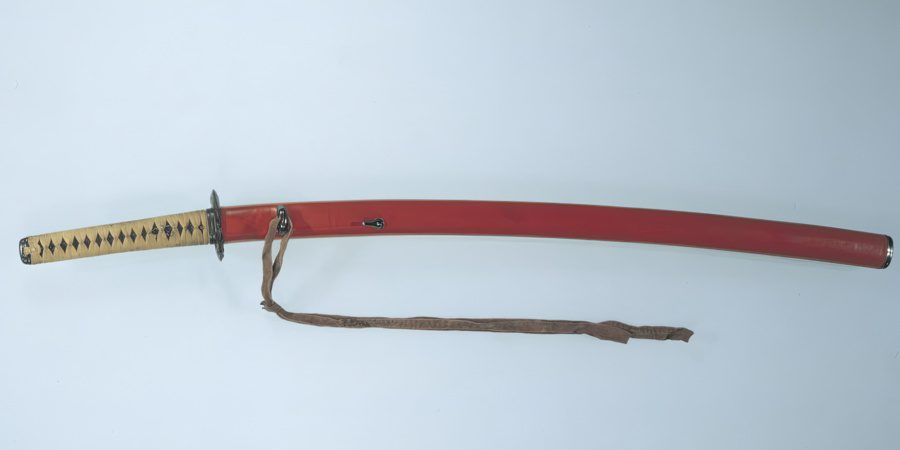
The Katana is the main weapon of Miyamoto Musashi. It is the most popular Japanese weapon and is deeply engraved and rooted in Japanese culture and the Samurai spirit due to its myriad of values. Musashi described the Katana as more than a mere weapon for hacking and slashing in war and duels. He describes the sword as a tool that leads the way of the warrior and his life philosophy of self-discipline.
The Japanese Katana is a curved single-edged sword, meaning sharpened just on one side of the blade. It is primarily used for slashing but can also be used for thrusting. Today it is Japan’s most important historical art piece and is frequently seen in many of the country’s sword fighting styles and sports.
Wakizashi
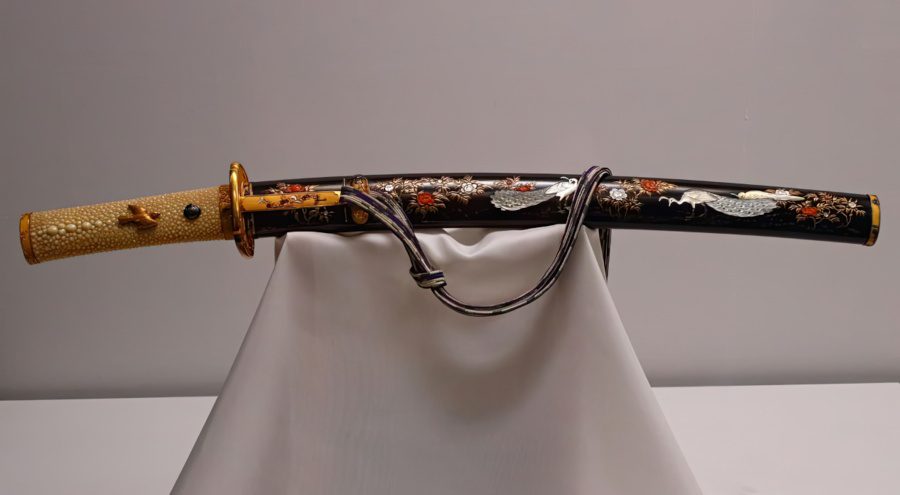
The Wakizasahi is the companion piece of Miyamoto Musashi. It was the secondary sword he used while training to overcome multiple enemies coming from several directions at once. Sometimes, he used it in conjunction with the Katana as it gave him more options and unexpected fighting styles.
Wakizashi blades are also the secondary weapons of every Samurai in Japan. They are carried around the waist next to the Katana and frequently used as a second line of defense. They are shorter and much lighter, allowing quick draw attacks called Iaijutsu.
Tanto
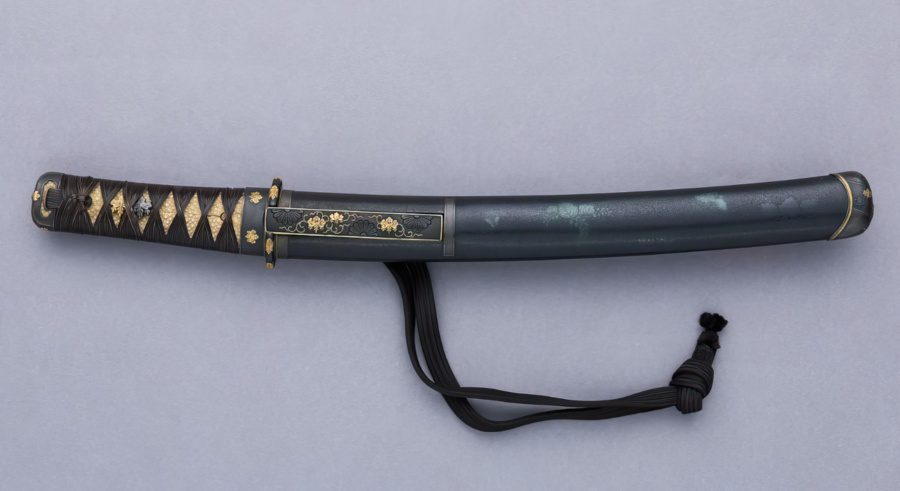
The smallest blade of the samurai is the Tanto, sometimes called a dagger. Whether or not Miyamoto used such a dagger, which is disputed because of the length of his Wakizashi, it is one of the most respected blades of the Samurai arsenal. It is a sword that carries culture and warrior tradition, can be used for self-defense, and the highly respected and valued seppuku. Seppuku is considered an honorable act of suicide by disemboweling oneself.
Tanto are the smallest blades and single-edged swords of the Samurai. They are the third and final piece of the Samurai weapon arsenal that is always carried with them, whether before battle or in peaceful public areas.
Daisho
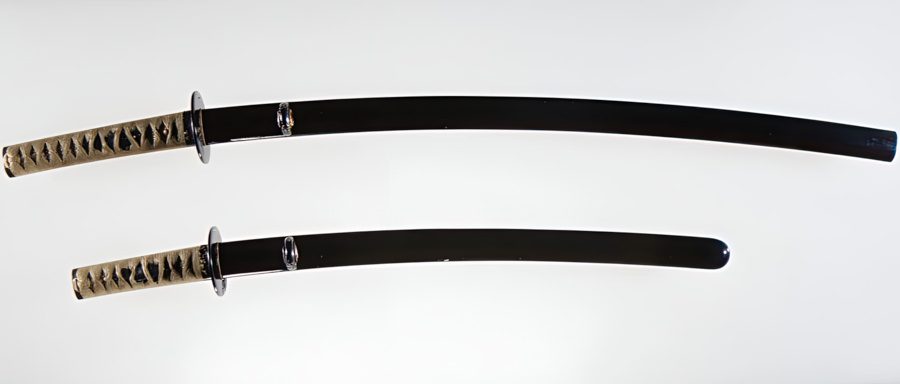
When swords are combined and carried in the traditional Samurai way, with a large and a smaller secondary sword, they are called Daisho, which translates to small and large, referring to the blade sizes. Musashi Miyamoto carried a Daisho with him most of the time and practiced dual-wielding with one.
While Miyamoto did not invent Daisho, it was the typical Samurai practice and started a few centuries prior with the Tachi and Tanto blades. Then with time, it progressed into the Katana with Wakizashi, and with modern times the smallest Tanto was added. The traditional way of Daisho is only two swords, but sometimes three can be used.
Bokken
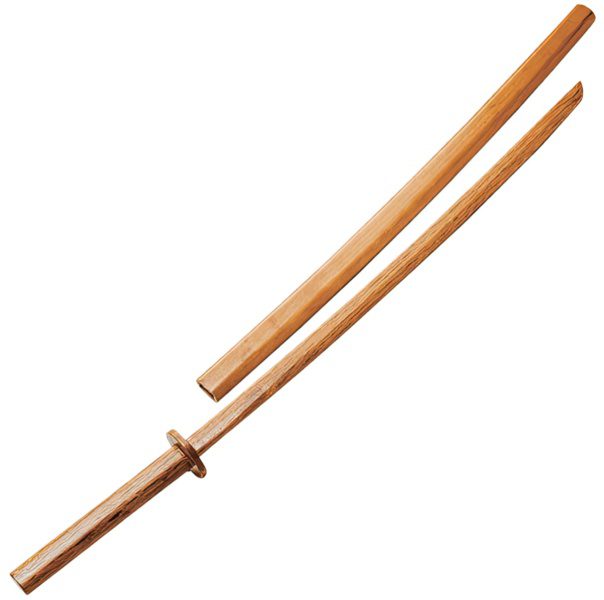
During Musashi’s life, he was frequently described as using a wooden sword called the Bokken or Bokuto in Japanese. This tool is still a very popular training sword used today to hone and sharpen the sword style of a Japanese warrior. Masashi used this type of tool so that he wouldn’t kill his opponents and train both his skill and spirit while preserving the sharpness of his other swords.
Today, the Bokken is the most popular training Samurai sword next to the Iaito, which is made of steel. It is frequently seen in Kenjutsu, Iaido, Jodo, and Kendo. There are multiple-length versions, but they all resemble the Katana, Wakizashi, or Tanto in their wooden blade shapes.
Wooden Boat Oar Sword
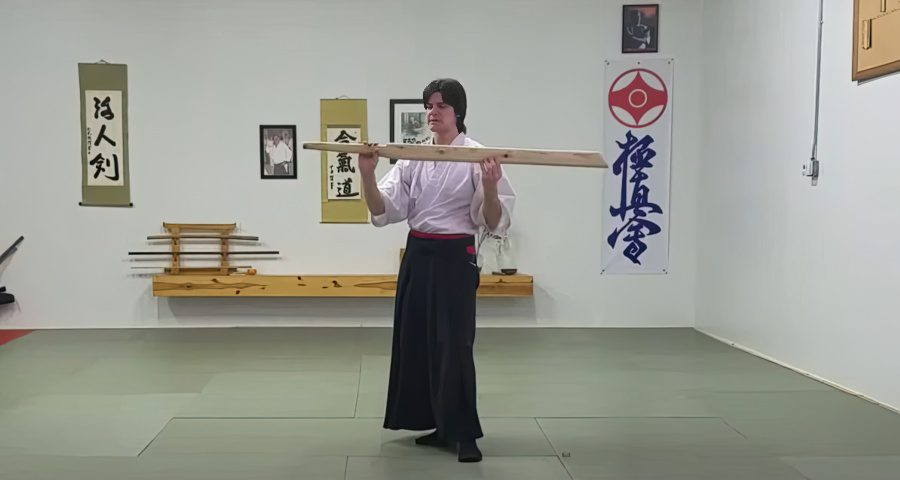
One of the most popular weapons that Miyamoto Musashi used was a wooden boat oar. This comes from the storyline about the duel with the fearsome warrior Sasaki Kojiro. Many things about this duel are disputed, such as whether Musashi made a Bokken out of the wooden oar with his smaller sword or used a wooden oar in the fight. The result, however, is that he won the duel.
Today a wooden boat oar is very popular in Japanese anime culture. Some characters can be seen with it as a symbol of martial prowess and swordsmanship. It does not look like a Bokken but is curved like a sword and slightly broader.
Did Miyamoto Musashi Invent Dual-Wielding?
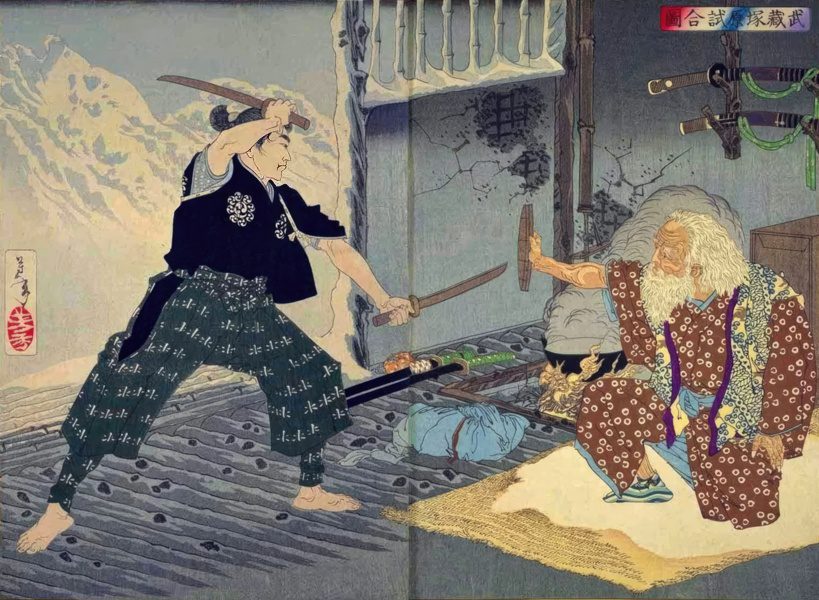
Miyamoto Musashi is a worldwide renowned and legendary swordsman, particularly because he is said to have invented the dual-wielding technique called Hyōhō Niten Ichi-ryū Kenjutsu with two-handed swords such as the Katanas. However, this is untrue, which may raise questions for sword users.
Samurai have always carried two swords, and likely the idea stems from antiquity. There are many other Japanese sword masters like Iizasa Ienao, the founder of Katori Shinto, one of the oldest existing ruyha martial arts, that included dual-wielding and using two Katana swords. There are other ryuha with similar concepts, such as Kyo-Ryu, Shinkage-Ruy, Hosan-Ruy, Yagyu Shikage, and Ona-ha Itto, that passed down evolved techniques of dual-wielding Katanas before Musashi’s time.
There is no historical reference to Miyamoto Musashi using two Katana long swords in any of his duels or during combat. He started writing and working on the dual Katana fighting stances in the last years of his life, long after he retired from sword fighting, confirming that he may not have tested whether the dual-wielding fighting styles were effective.
Musashi Miyamoto was not an inventor but a great swordsman, and he did not invent the two-Katana style but made it famous. Today this false misunderstanding of Musashi Miyamoto comes from novels written by Eiji Yoshikawa titled Musashi. This serialization of Musasahi began in 1935 with this historical fiction adventure translated to English and published in the West in 1981.
Why Did Miyamoto Musashi Teach Dual-Wielding?
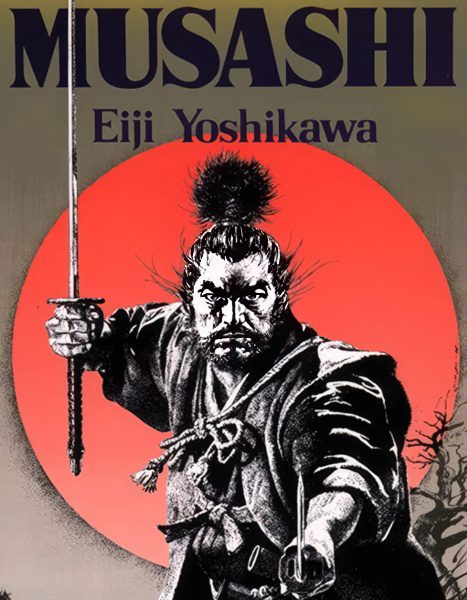
The reason behind preaching and studying the art of the Katana dual-wielding that existed centuries before Musashi Miyamoto was to preserve the ancient warrior spirit of the Samurai. The motto of the Samurai predecessors is that they are warriors who defend themselves in any combat situation.
Training with a dual-wielding Japanese Sword taught one the warrior Samurai spirit and how to defend himself in a battle with multiple enemies. Musashi only used one Katana in all of his duels. Using a Japanese blade in each hand would only strengthen and improve the skills when using a single Samurai Sword.
Musashi Miyamoto also did not promote dual-wielding swords, which is another misconception about him. He clearly states that if a duel or battle requires only one sword, only one should be used. The dual-wielding training is to make the Samurai ready for any situation. It is also useful if the Samurai gets injured, is on horseback, or has to flee a situation. The core teaching of Musashi Miyamoto is to fight in a way that is the most advantageous to a warrior.
